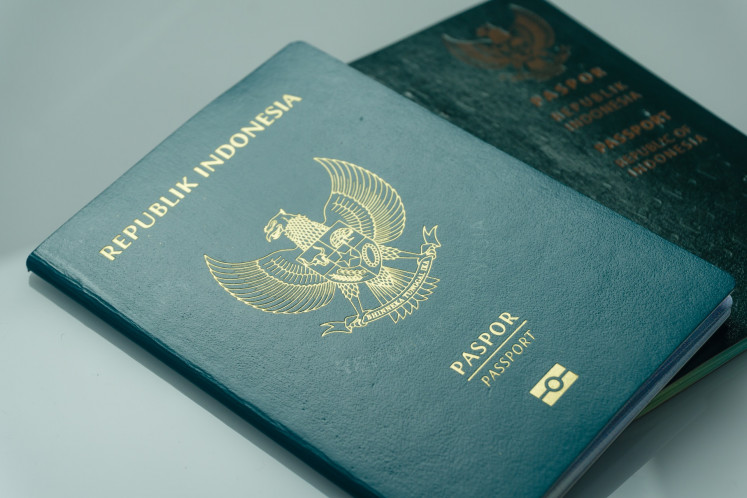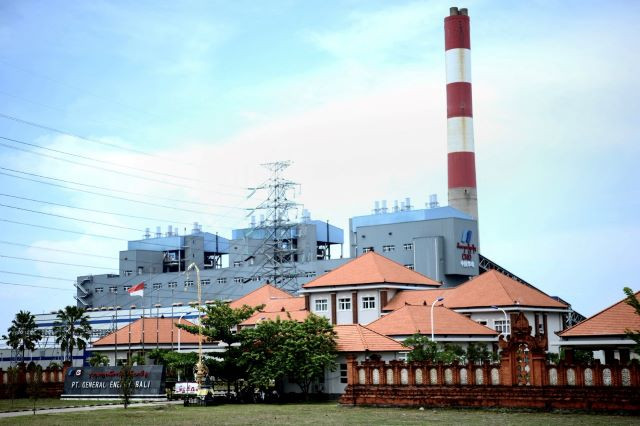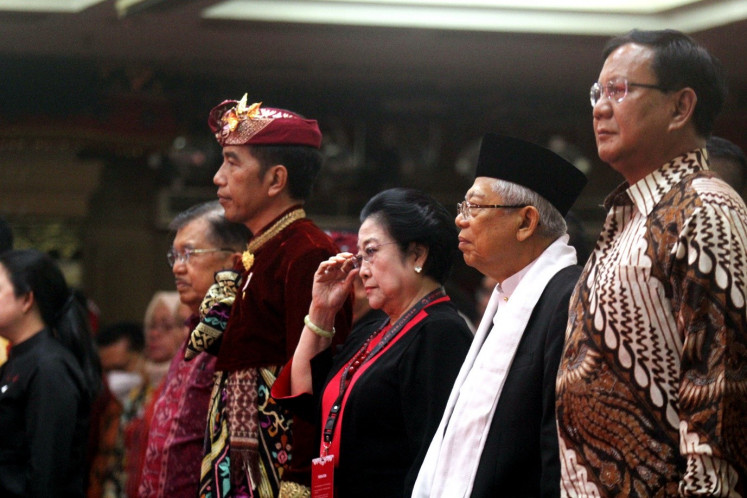World Cup may bring about advertising boom: Nielsen
The World Cup may have little bearing on the national soccer team, having been kicked out of the contest in the qualifying rounds, but it may have a huge impact on the Indonesian media via a boom in advertising
Change Size

T
he World Cup may have little bearing on the national soccer team, having been kicked out of the contest in the qualifying rounds, but it may have a huge impact on the Indonesian media via a boom in advertising.
The world’s largest soccer event could apparently kick into play big time advertising revenue for the media, the main driver in an estimated 16 percent growth in advertising revenue predicted for this year, according to the Nielsen Company Indonesia on Tuesday.
Maika Randini, the senior manager for business development of Nielsen Media Research, told a press gathering that experience showed that the event has always in the past pushed advertisers into spending more money.
Advertisement Revenue Growth in Media. Source: Nielsen Advertising Information Service
“In 2002, the World Cup pushed advertisers into spending 32 percent higher than the previous year.
This year, we predict the event will trigger advertising spending to increase by 16 percent,” she said.
Most of World Cup-related advertisements would appear between April and June, building up to when the competition would kick off, Maika predicted.
The advertising boom will not only be limited to the television stations that will air the World Cup matches, but also to other media, including print media “because many companies will use the momentum [of the World Cup] to promote their products,” she explained.
Nielsen predicts that the volume of advertisements for consumer goods like cigarettes, foods and beverages will jump significantly due to the World Cup. “Such products usually use soccer-related events to increase their sales,” she said.
Apart from the World Cup, as many as 244 regional elections have also been scheduled this year, contributing also to spending growth in advertising, as did previous elections, but the World Cup is predicted to have a more significant impact on advertising budgets than these elections.
According to Maika, electronic media, especially television, will remain the biggest draw for advertisers seeking to promote their products on the back of the soccer competition.
Nielsen also released research on advertising spending during 2009, revealing that advertisers spent Rp 48.57 trillion (US$5.25 billion) during 2009, representing a 16.46 percent increase up from Rp 41.71 trillion in 2008.
However, the growth was slightly lower than for overall advertising expenditure in 2008 which grew by 19 percent compared to 2007.
Newspapers apparently appeared as the media category recording the highest growth in advertising revenue in 2009, running somewhat counter to trends in most developed countries where newspaper advertising revenue has been declining, compared to electronic media including television and Internet.

According to the study, advertisers spent Rp 16.9 trillion to advertise in newspaper in 2009, 22.56 percent higher than in the previous year (2008) when newspaper advertising hit Rp 13.791 trillion.
Newspaper advertising space increased by 16 percent to 128,781 pages from 111,152 pages in 2008.
Television kept the biggest share with a 61.54 percent market share of total advertising expenditure, but its growth in market share was not as high as that of newspapers.
Television advertising spending hit Rp 29.89 trillion in 2009, only increasing by 13.91 percent from Rp 26.24 trillion in the previous year. So in Indonesia advertising expenditure on print outlets in 2009 actually increased from 38.1 to 39.8 percent. This suggests a different trend in developing markets as compared to developed countries.
Only Rp 1.784 trillion from advertisers’ budgets went to the category of magazines and tabloids, according to the study, representing a 6.32 percent increase from 2008’s Rp 1.68 trillion.
The study also showed that the 2009 legislative and presidential elections helped media companies to enjoy a significant increase in income from advertising despite the global economic crisis which had stifled advertising expenditure for most businesses.
Spending on advertisements grouped under the government and politics category appeared as the second highest category with Rp 3.64 trillion, after telecommunication with Rp 3.88 trillion.
“Advertisements from president candidates alone contributed Rp 308 billion, the third highest in product categories after two telecommunication products,” Maika said.
These Nielsen’s research conclusions were the result of an advertising expenditure survey covering 103 newspapers, 165 magazines and tabloids and 24 TV stations throughout Indonesia. (bbs)









